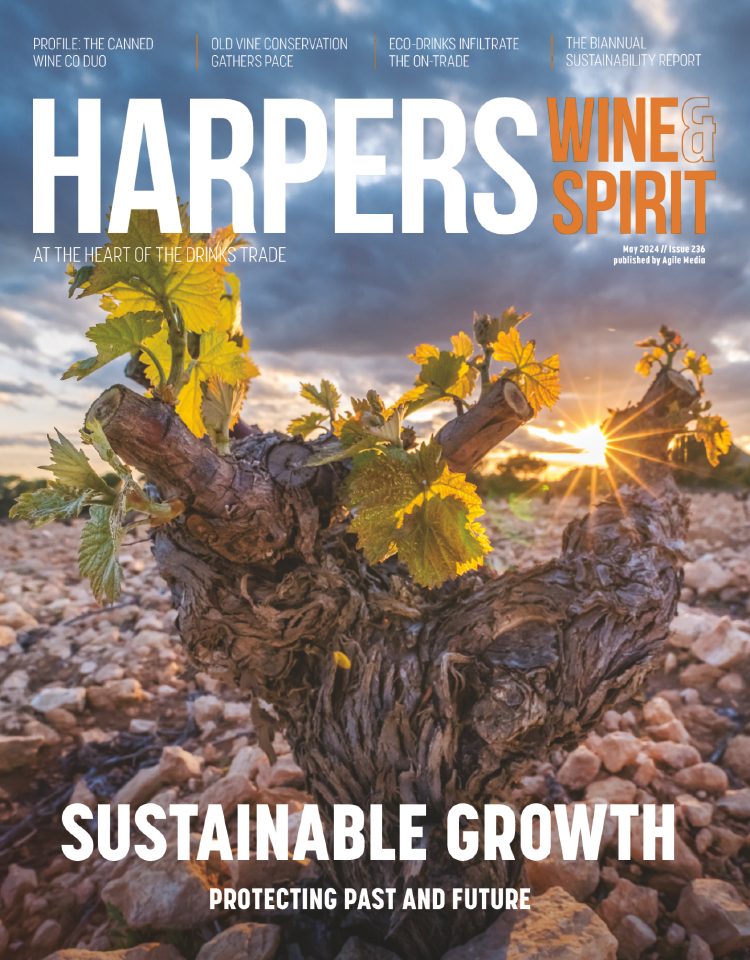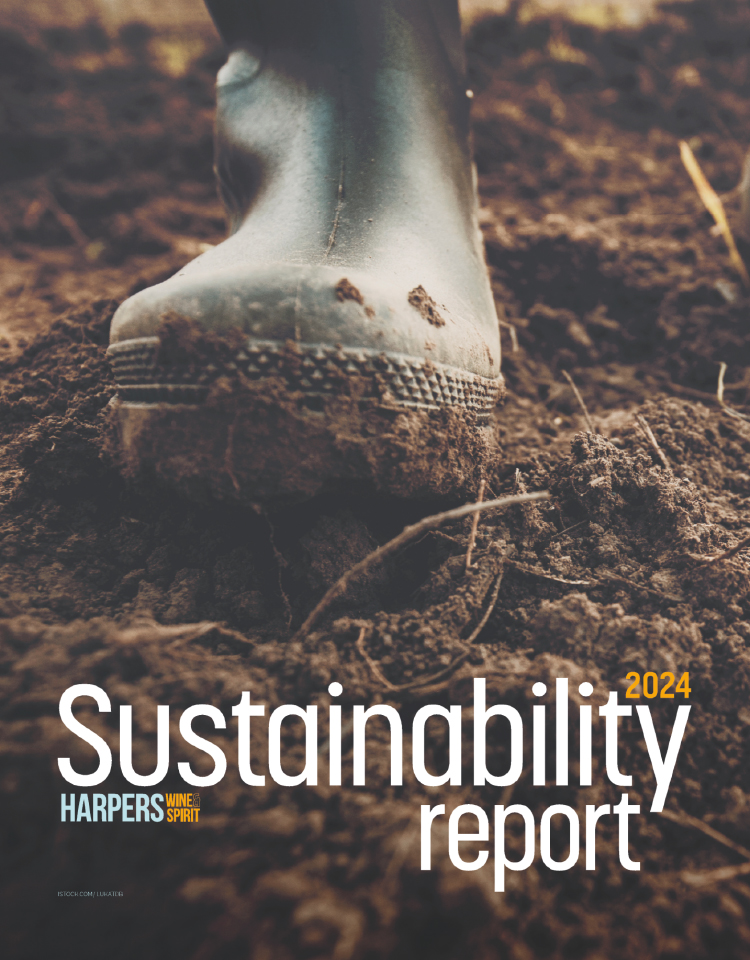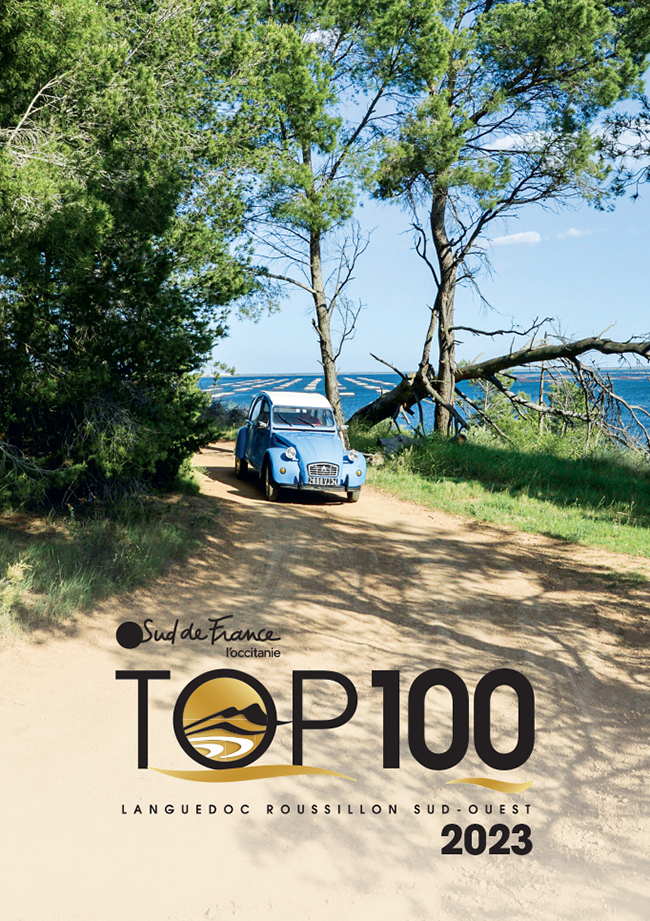
Taste-Off: Coming around to Riesling
The trade returns to the Riesling conundrum time and again, but our Taste Off panel detected signs of change with respect to this consumer-bewildering variety. Andrew Catchpole reports from a lively session at 9 Vines in Hove.
Taste Off Panel
Marc Wise, owner, 9 Vines
Mathew Snook, manager, 9 Vines
Rob Maynard, co-owner, Wild Flor
Toby Peirce, owner, Quaff
Paul Morgan, co-owner, Fourth & Church
Sophia Longhi, communicator, Skin & Pulp
Andrew Catchpole, editor, Harpers Wine & Spirit
I’d still rather drink a crap Riesling than a crap anything else.” As statements go, Toby Peirce’s tongue-in-cheek opener at the beginning of our tasting cut to the chase with this noble variety, which tends to be exalted by trade and critics alike, but can be a little more challenging to sell to even wine-loving consumers.
The theme for this summer session centred on two questions; namely, has Riesling, distanced itself from a biased perception of an older generation, becoming easier to sell? And has its increased globalisation in terms of quality examples from around the world helped that along?
- Read more: Taste-off: War of the Rosés
Riesling being Riesling, in all its complex, expressive, but sometimes bewildering diversity, the answer to both appears to be ‘maybe… yes and no’. Here, then, are some of the key comments from our panel.
How did you like the wines and did you find major differences between the Old and New World in terms of deviation from the essential character of Riesling?
Paul Morgan: The general quality was excellent.
Sophia Longhi: It’s a puzzle why Riesling is not so popular commercially, because the wines are so friendly and accessible, across the board. I don’t think there was that much difference in it, actually, between New and Old World.
How easy is it to sell Riesling?
PM: The way we sell things, we say it’s Riesling and then ask what they like – the price point first, then do they like minerality, acid (but we say citrus); do you want to wander into the oily, petrolly side? If it’s at an accessible price point, then it’s whether it’s dry, citrussy, so you start off like that. If they become comfortable with Riesling at a good price point, then you can take them to something else, price-wise and in style. But selling Riesling [off the shelf] can be pretty tough. We put it on by the glass and then it sells really well if we can get people to taste it – especially with food. But getting people to take that first jump can be difficult.
Toby Peirce: With Riesling, because of the acidity, sometimes as a winemaker you’ve got to leave a little more sugar on the front to balance it up, but people don’t get past that to the second mouthful, which tastes dry because the acid has prepared their mouth. But that first taste of sweet, they think ‘this isn’t cool’.
So, it’s that classic situation where a style or variety is loved by the trade and critics, but not so much by the public. All your lists and shelves are top heavy with Riesling, but would they be if the accountant was in charge?
Rob Maynard: That’s why we get through a lot of accountants – sack ‘em! Riesling probably makes up about 10% of our listing, but much less of our sales. And it’s nuanced. The changes within Riesling [on the list] can be dramatic, so that’s difficult, and really needs leading and guiding by the venue. It works quite well for us, we’re on-trade, people are having dinner, so we can set that up. But it’s more difficult for you guys [indie merchants].
TP: We’ve always pushed Riesling, and for 10 years we were banging our head against a wall a bit, but the past few years it’s been fine. We ship from Germany now, a producer called Gerd Stepp, who does a Pfalz Riesling that we can knock out at £12-14 and we can sell half a pallet of it before it lands. It’s not Marlborough Sauvignon, but it sells. Marlborough Sauvignon has jumped up for us to £12-14, so I’ve got nice Rieslings, estate wines, good wines – it’s a bit more lemony and zesty than your Sauvignon, but it’ll go better with your fish, so ‘shut up and buy it’, and it works. That is encouraging, because it’s a ‘bulk’ market at that price.
Are there enough good examples at entry level, say below £10?
SL: There’s Waitrose own-brand and Morrisons are the same, so supermarket own brands are there at £7-8.
Marc Wise: I always look for good examples of something that is not overly complex, but easy, that sit on the retail shelf for people who want that, so our entry is £12.
RM: You also need to deliver something – typicity is very important. With some varieties, you can get perfectly nice wines at under £10. But are they nice Rieslings, or are they nice wines made with Riesling? What are we in the market of doing? As independent restaurants and retailers, yes you can get a Riesling for £8, there is an element of ‘gateway’ there, but you are not really developing the market [for Riesling]. I’ve drunk loads of cheap Riesling that is really flirting with Vinho Verde in character and I’d almost say that is the opposite to a gateway. It’s a bit like Pinot Noir, where you do need to spend a bit more money to get typicity. And Riesling, as a variety, has intense typicity and is extremely responsive to terroir, to winemaking, so you need to hit that.
TP: At the same time, my earlier comment, that I would rather be drinking crap Riesling than crap anything else, is because I’d rather be drinking wine at entry level that tasted vaguely like Riesling than something that tasted like any other wine at that level.
SL: I do believe in the gateway concept, and, yes, you are getting a watered-down version at first, but it does get you taking ownership – ‘oh, I like that Riesling’ – and then you’ll recognise Riesling on a menu, or in the supermarket, and go on to explore more. For beginner wine consumers, it’s a bit like putting on a football shirt and supporting a team, they do like to grasp a grape variety they have tried and they will carry on with that, perhaps trying other things.
Mathew Snook: Speaking about entry-level, well, when was the last time you saw a Riesling on a pub wine list? That’s your entry point…
RM: It’s interesting, because everyone around this table likes it and everyone here sells loads of Riesling. But it’s not the consumers being resistant, I think it’s industry education [that is lacking]; the trade talks itself out of selling Riesling. Think about the number of restaurants in this country, but many of them will have a single supplier list – how many Rieslings are on that wine list? One? On, maybe, a wine list of 100, and as a novelty.
We sell so much Spätlese, Auslese, Kabinett, we serve Riesling with cheeses, with fresh and sweet things, as aperitifs. But that’s not the majority of the market, and the responsibility lies with those bigger suppliers. They are not sitting down at a table like this saying ‘we all love Riesling’, they are saying ‘nobody likes it’.
As a big retailer, if you have, say, a Mosel, a Rheinhessen and a Pfalz, three pretty different styles of German Riesling, you might be shocked at how much you could sell. But if they are not there, you won’t sell any.
How much of a favour has the New World done for Riesling – has ‘going global’ helped the conversation?
MS: When we look at the demographic of people who buy from independent
wine shops, we can safely say that it’s not 19- to 25-year-olds. It’s an older demographic, and they come from that generation of the Black Towers and
Blue Nuns, so that’s what they remember and they are put off. But for younger drinkers, they are up for trying anything. It’s a generation thing, it’ll take some time, but when you see things like New Zealand vineyards making Riesling, the hordes of New Zealand Sauvignon Blanc drinkers might say ‘you know what, let’s try something different’ and try a Riesling.
RM: Today is a really good demonstrator that it is a variety that absolutely excels in Europe. German Riesling, Austria… your money goes a hell of a lot further in Germany. Internationally, not that they are not good wines… but when you look at what you can put on a wine list for £50, then you can be buying from some of the best [German Riesling] producers in the world. Whereas from, say, Australia, the relative value is lower.
TP: There is a lot of ambitious pricing. Germany offers good value for money.
PM: And German Riesling is super-accessible, a bit limey-lemony, a bit crisp, super-fresh, easy to drink.
To sum up, how do you best push Riesling?
PM: For us, it’s all about the flexibility. You need the stock, but then the flexibility we have is you can shift it around, from retail to by the glass, to dinners, to tastings, so nothing sticks on the shelf. It takes a lot of time, admin, pricing… but the exciting bit, when it works, which is 99% of the time, is that with the right audience people enjoy it and it flies. And then, sometimes, people come back and buy retail. And, as with anything, whether it’s Riesling, sherry, Greek wine, even Nebbiolo – if you put the effort in and get known for having the stock, people will come back to you and will also understand that it’s not what it was. People also travel much more, so learn more and are more interested in discovering different things.
TP: To retain the Rieslings on your shelf, you don’t need many customers.
If you can educate one or two, and get one or two regular customers for a wine, then that’s that wine safe, you can keep it on the shelf. So you don’t need to convert everyone. But once you have that, then the whole category looks safer and once those customers do return, then the roots start going out and they will try different things in the category.
The Tasting
Germany
Black Tower Club Edition 2021,
Reh Kendermann (£7, Asda)
Light, fresh, balanced, with citrussy notes, and clear varietal character.
Mosel
Weingut Max Ferd. Richter Mülheimer Sonnenlay Riesling Zeppelin 2022
(RRP £14, not imported, via Wines of Germany)
Great value, showing some lean, minerally character, but with good typicity, intensity and length.
Villa Huesgen By the Glass Riesling 2018
(RRP £17, Wine Treasury)
Aromatic, spilling soft fruits on nose and palate, bound around a zingy thread of minerally acidity.
Annaberg Riesling 2021
(RRP £24.80, Indigo Wine)
Citrussy-fresh, appley, with undertones of dry honeycomb through to the long finish.
Dr. Loosen Ürziger Würzgarten Riesling Spätlese 2019
(RRP £30.50, ABS)
Crisp, with beautifully balanced notes of lime and peach, lifted by a slate-tinged thread of bright acidity.
Pfalz
Bauer Sex Drugs & Rock ‘n Roll Riesling 2022
(RRP £20, Graft Wine)
Floral and lime-lined, this zesty modern dry Riesling oozes expressive appeal.
Rheingau
Robert Weil Kiedricher Riesling Trocken 2021
(£23.31 on-trade list price ex VAT, Bibendum)
Floral, citrus and stone fruit notes intermingle on this superb, mineral-slaked expression of Riesling.
Salz der Erde Indigo Selection 2020
(RRP £28, Indigo Wine)
A crisp, dry, citrussy style, with satisfying texture and moreish intensity.
France
Alsace
Riesling Les Jardins Domaine Ostertag 2020
(RRP £24.99, Bancroft)
Beautifully balanced, with lifting acidity matched by richer, rounded stone fruits and some intense minerality.
Famille Hugel Estate Riesling 2017
(RRP £25-27, Fells)
Floral and fresh on the nose, yet with oilier ripeness and complexity developing on the superbly balanced palate.
Austria
Kamptal
Weingut Nastl Langenlois Riesling Trocken 2020
(RRP £17.95, Jeroboams)
Lemon and apricot fruits meet vivid acidity on this lively, fresh, finely honed wine.
Allram Gaisberg Riesling Erste Lage 2020
(RRP £38.75, ABS)
An elegant, well-balanced, yet expressive Riesling, matching generous mouthfeel with persistent minerally length.
Australia
Clare Valley
Kaesler Stonehorse Riesling 2022
(RRP £16.95, Jeroboams)
Ripe and rounded, with lime and soft fruit notes, this packed a (dry) punch of Riesling intensity.
Mount Horrocks ‘Watervale’ Clare Valley Riesling 2022
(RRP £27.99, Liberty Wines)
Youthful and elegant, this seductive Clare style promised great evolution on nose and palate.
Eden Valley
Hill-Smith Estate Mesh Eden Valley Riesling 2021
(RRP £22, Fells)
Packing a zesty punch of lime-licked acidity, this dry, moreish wine was richly textured with great length.
NSW
Ravensworth Estate Riesling 2022
(RRP £34, Graft Wine)
Youthful floral and citrus aromas met lees-enriched depth and length on a complex, persistent palate.
WA
The Next Hundred Years Riesling 2021, Frankland River, Great Southern
(RRP £42, The Wine Treasury)
A lovely texture, with citrus peel notes beautifully balanced by subtly integrated oak spice on this palate-satisfying Riesling.
New Zealand
Marlborough
Greywacke Riesling 2021
(RRP £25.99, Liberty Wines)
A lovely, elegant style, at once youthfully restrained but beautifully balanced and
varietally expressive.
Central Otago
Two Paddocks Dry Riesling 2019
(RRP £25, Fells)
Showing attractive signs of development, still fresh, but with hints of oily, almost dry honeycomb depths.
USA
California
J Lohr Bay Mist Riesling Monterey County 2022
(£12 trade DPD, Vineyard Cellars)
Veering towards exotic fruits, this fresh, easy-drinking style had nice texture and a hint of spice on the finish.
NY State
Hosmer Limited Release Riesling Cayuga Lake 2020
(£14 trade DPD, Vineyard Cellars)
Showing lovely balance, with citrus and orange notes leading to mineral intensity on this lingering mouthful.
Red Newt Dry Riesling 2018, Finger Lakes, New York state
(RRP £32, Wine Treasury)
Rewarding nuances of baked lemon and stone fruits meet focused acidity on this attractive, still youthful wine.
Oregon
Alexana Revana Vineyard Estate Riesling 2018, Dundee Hills, Willamette Valley (£13.50 trade DPD, Vineyard Cellars)
An intense varietal nose, with floral and richer stone fruit notes topping a nicely balanced pairing of zingy acidity and textured body.
South Africa
Stellenbosch
Hartenberg Wine Estate Riesling 2020
(RRP £16.49, Bancroft)
Citrus and apple notes meet peaches and honey on this dry, crisp, quite ripe expression of the variety.
Elgin
Spioenkop Riesling 2017
(RRP £29.99, Museum Wines)
Lime and a lick of salinity introduce this complex, textured, well-honed wine, which is developing beautifully with age.
Canada
Nova Scotia
Luckett Vineyard Riesling 2020
(RRP C$25, seeking UK importer)
Citrus lift meets an almost honeyed palate, with a healthy thread of uplifting acidity delivering a satisfying, seafood-friendly style.
Uruguay
Montevideo
Bouza Riesling Vinedo Pan de Azucar Bouza Bodega Boutique 2020
(RRP £29.95, Jeroboams)
Orchard fruits meet zingy acidity, with satisfying moreish mouthfeel and depth delivering an attractive, well-balanced wine.
Keywords:
- New Zealand
- Wines of Germany
- Riesling
- Austria
- Alsace
- Two Paddocks
- Harpers Taste-off
- Rheingau
- Pfalz
- Mosel








